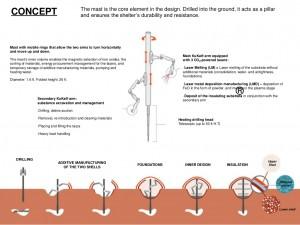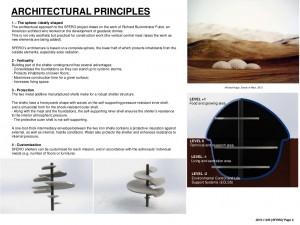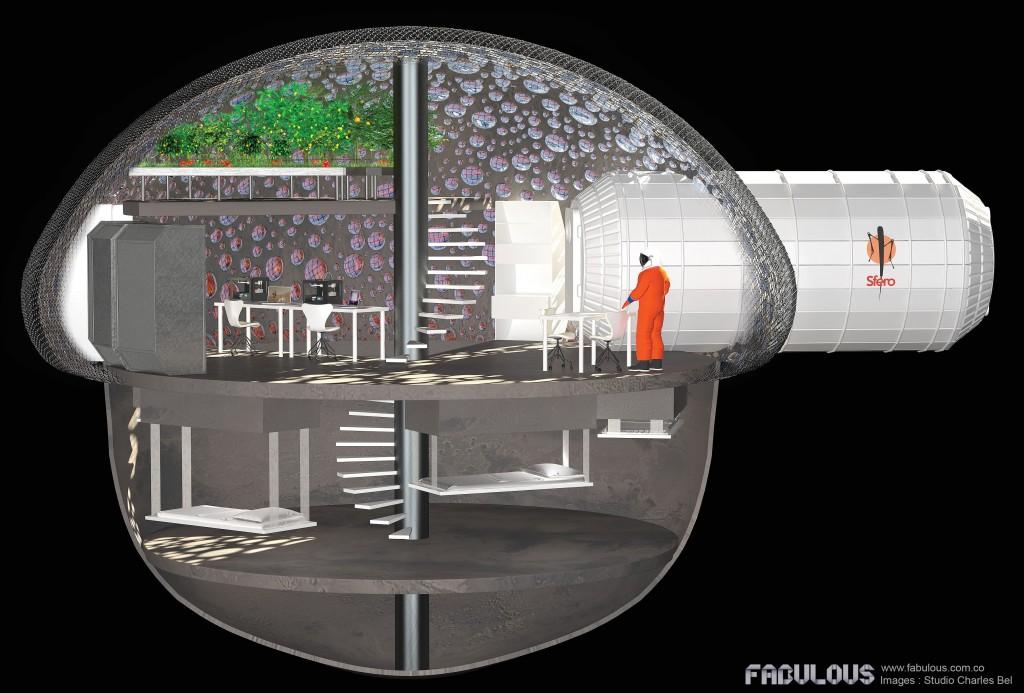 Back in May, NASA announced their 3D Printed Habitat Challenge hoping to find some new ideas for potentially creating workable ideas to create functional and safe living spaces suitable for the surface of Mars. The challenge was issued in conjunction with America Makes, the US’ national accelerator created to explore additive manufacturing and 3D printing technologies. The first round consisting of the top thirty designs will be judged at this year’s World Maker Faire in New York and the winner will receive a $50,000 prize. The second round will require entrants to put their materials where their extruders are and actually fabricate their concept, with an eventual prize of $1.1 million going to the winners.
Back in May, NASA announced their 3D Printed Habitat Challenge hoping to find some new ideas for potentially creating workable ideas to create functional and safe living spaces suitable for the surface of Mars. The challenge was issued in conjunction with America Makes, the US’ national accelerator created to explore additive manufacturing and 3D printing technologies. The first round consisting of the top thirty designs will be judged at this year’s World Maker Faire in New York and the winner will receive a $50,000 prize. The second round will require entrants to put their materials where their extruders are and actually fabricate their concept, with an eventual prize of $1.1 million going to the winners.
 While the contest is open only to American design teams, that didn’t stop French design firm Fabulous from stepping up and submitting their own concept. Their idea is for a robot capable of burrowing itself into the surface of Mars in order to extract the high concentrations of iron in the soil. The iron will be used to 3D print metal domes that will be insulated with a layer of water, also extracted directly from Martian soil. The habitat called Sfero is a contraction for “Sphere,” “Iron” and “Water,” for obvious reasons. Their multidisciplinary design team includes several CNRS (The French National Centre for Scientific Research) and Mars Society scientists, architects, image specialists, and 3D printing technologies and materials experts.
While the contest is open only to American design teams, that didn’t stop French design firm Fabulous from stepping up and submitting their own concept. Their idea is for a robot capable of burrowing itself into the surface of Mars in order to extract the high concentrations of iron in the soil. The iron will be used to 3D print metal domes that will be insulated with a layer of water, also extracted directly from Martian soil. The habitat called Sfero is a contraction for “Sphere,” “Iron” and “Water,” for obvious reasons. Their multidisciplinary design team includes several CNRS (The French National Centre for Scientific Research) and Mars Society scientists, architects, image specialists, and 3D printing technologies and materials experts.
Because of tests run by the small population of rovers already roaming the surface of Mars, we know that the planet’s red coloring is thanks to rust present on the high density of iron oxide in the soil. Fabulous wants to leverage the presence of so much iron and use it as the raw material to construct the Sfero pods. Mars also has a lot more water than many of us may be aware; NASA estimates that the 1.5% to 3% of water stored in permafrost deep in the soil, can easily be liquefied using basic condensation methods. Not only can the water help support human life, it can be used to water plant materials for the production of food and oxygen as well as acting as an insulating material for the habitat itself.
The water would be stored in a pocket between the Sfero pod’s two iron hulls. Not only is this a smart storage option, but water also acts as an excellent barrier between humans and deadly solar radiation not screened out by the thin Martian atmosphere. Fabulous also says that it can act as a permanent psychological reminder of the planet Earth. It would almost, they say, represent a protective amniotic fluid for the red planet’s new residents.
The Sfero robots start as a long, pole-like robot that will be embedded several meters down into the surface of Mars–deep enough to extract water from the soil and an abundant source of raw materials to construct the habitat hulls. The robot has two autonomous arms to help it in the construction process. The first arm is used to harvest the iron materials in the soil, while the second is equipped with a metal 3D printer that will convert the raw iron into metal powder to be melted together with a high-powered laser. The printer will start by using the iron to build a solid foundation, and then begin the fabrication of the outer and inner hulls. Each hull will have a spherical shape with an internal honeycomb structure, making it both stronger and highly resistant to the pressure differentials between the surface of the planet and the livable atmosphere inside of Sfero.
The robot 3D printer is also capable of constructing all of the habitat furnishings, including floors, walls, beds and chairs. It can also create different types of internal structures, so specialized Sfero structures can be made for different purposes, like living quarters, research areas or domes specializing in growing plants for food and oxygen. With a few dozen Sfero robots, an entire colony can theoretically be self-constructed on Mars with very little human involvement. The design also suits itself for Earth-based testing in areas with similar soil compositions like the volcanic areas in Hawaii and parts of the Mojave Desert in California.
It isn’t clear if NASA will consider or even see the Sfero habitat, which is probably why it was released publicly, but it’s a pretty great and clever idea. The main challenge as I see it lays in the metal 3D printer attached to the robot arm, as most metal 3D printers require specific vacuum conditions to function properly. While Mars is far from a breathable atmosphere, it is much further from being a vacuum. But as an idea it’s a pretty great one, and if it could be tested, and alternately used, on Earth, then we could potentially see some Sfero pods available as livable homes here on Earth.
Do you think that 3D printing will eventually help humans colonize Mars? Discuss in the 3D Printing and Mars forum thread on 3DPB.com.
Subscribe to Our Email Newsletter
Stay up-to-date on all the latest news from the 3D printing industry and receive information and offers from third party vendors.
You May Also Like
3D Printing Financials: Fathom Struggles in Financial Quicksand During Critical Transition
Facing a year of key transitions and financial pressures, Fathom (Nasdaq: FTHM) has filed its annual report for 2023 with the U.S. Securities and Exchange Commission (SEC). The document outlines...
Latest Earnings Overview for Australian 3D Printing Firms Titomic and AML3D
Australian 3D printing manufacturing firms Titomic (ASX: TTT) and AML3D (ASX: AL3) reported their financial results for the period from July to December 2023, marking the first half of their...
3D Printing Webinar and Event Roundup: April 7, 2024
Webinars and events in the 3D printing industry are picking back up this week! Sea-Air-Space is coming to Maryland, and SAE International is sponsoring a 3D Systems webinar about 3D...
3D Printing Financials: Unpacking Farsoon and BLT’s 2023 Performance
In the Chinese 3D printing industry, two companies, Farsoon (SHA: 688433) and Bright Laser Technologies, or BLT (SHA: 688333), have recently unveiled their full-year earnings for 2023. Farsoon reported increases...



































